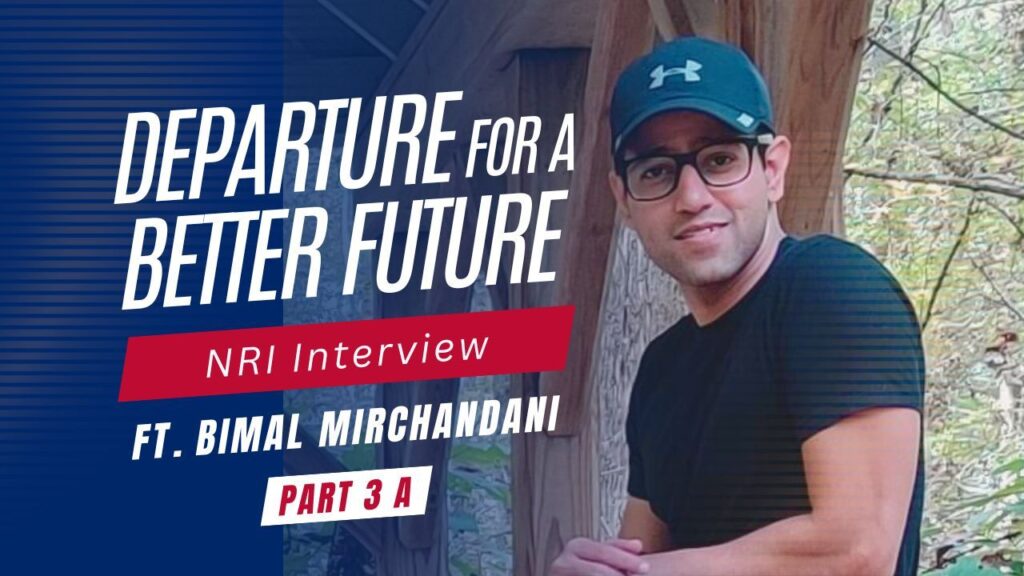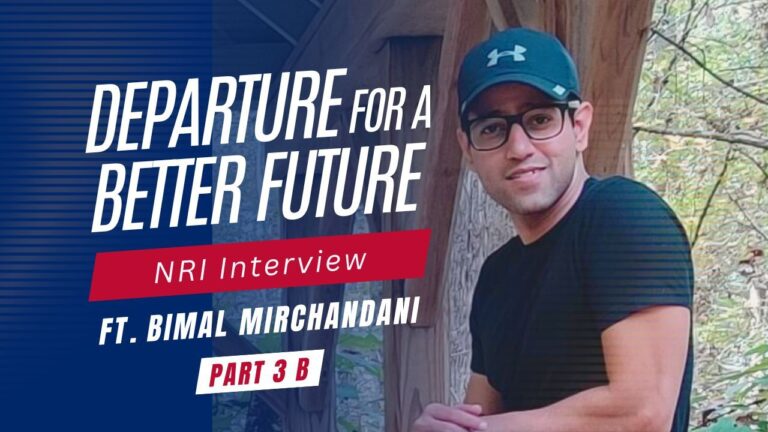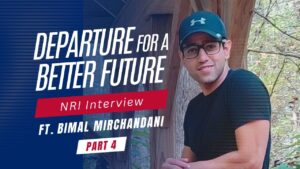PART III A – Monetary Ride in the Great Unknown
Recap-
The previous part extensively discussed differences between the American and Indian educational and job worlds. We have also tried to help you by mentioning the process of getting an internship and, eventually, a job in America. Does this all sound alien to you? GO READ THE FIRST TWO PARTS if you would like to know more or even just to refresh your memory.
Life isn’t all colors and sparkles. Is it?
Well, when you land in America, you might think this is it. You have reached. You have achieved everything that you have ever aspired to be, or thought would be enough to define success for you.
But the truth is, you wake up from your daydream as soon as you take your first breath in the land of opportunities. You might have more career options in America, but when it comes to living there, you might face some problems. This is because India’s economy and society differ from those of America.
Thus, America being unfamiliar is initially difficult to settle in. A developed economy like America requires you to manage your finances in the best way possible, so we are trying to help you understand them better.
On a very personal note, I, myself, being a Sindhi, mess up my finances sometimes. I know I do not live up to the stereotype, but guess who does? Bimal Mirchandani. He has experience managing his finances in an economy as vibrant as America. Thus, you can count on him to suggest ways to handle your expenses and income (preferably enough to live a comfortable ‘American’ life).
As mentioned in our previous parts, Bimal landed in America with just $3000 and an educational loan on his head. But today, he has paid off his loan successfully and is looking to buy a house and a car right there in America. Of course, the hard work you put in, the kind of sector you are in, the bucks you make, and the amount of luck that favors you will matter. However, these factors will matter only when you know the process.
The Money Matters
Bimal talks about the first internship he ever got. He believes he is not wrong to claim that he was the highest-paid person in his class when it came to internships. He mentions he was not allowed to intern in a professional background. But he was allowed to work in the college.
So, he did find another job, which was a student assistantship. And he got paid for it. He got about $1800 a month. According to him, it was good enough since his monthly expenses averaged around $800, as he had noticed during the two months he had already spent in America.
Bimal’s total income was $1800, and his monthly expenses were about $800. Thus, he made $1000 each month, essentially ‘extra money.’ Calm your fluttering eyes after seeing some extra bucks that you make. Bimal says, “Suddenly realizing you’re going to make $1800 now in this month gives you surplus money to make certain changes to your lifestyle. So definitely a little bit gets into that”.
But even though he and his roommates were able to buy some home essentials, including a TV, he says, “$800 is still not enough”. So, how will you have ‘enough money?’ By saving, duh!
As Bimal mentions, he made $1800 each month, and $800 was what he generally spent on his monthly expenditures. Now, even if he had added an extra $200 for extra expenses, he still had the extra $800 left each month. He says these $800 weren’t just for buying fancy stuff, but instead, he was saving to accumulate enough money to pay his tuition for the third semester.
He says he saved around $7000 and used this money to pay his tuition fee, and thus, the loan he had taken decreased since he paid much of it by saving.
He says, a lot of times, people might not understand that if you go to America on a loan, the sum of money you earn and save there initially has to go into paying off that loan. Only after it can you start saving in real-time. He mentions paying off the loan becomes your top-most priority because of the loan’s interest rate.
He describes that Indian banks allocate loans at 10%, while in the US, one can get educational loans at a 3% to 5% interest rate. He took out a loan of 23 lakhs, meaning he had to pay 10% interest on this amount. And this could accumulate really fast if one doesn’t actively save and pay off the loan.
He further discusses one practice that a newbie in America. It is the practice of ‘avoiding taking money from the bank. He made sure he was using his own money – the money he was earned from his ‘job’ – rather than cashing out from the bank. We have mentioned that there are programs like GRA – Graduate Research Assistant. If you would like to get your 40% tuition fee waived off, this program could help. Bimal says he didn’t take it because he wanted to know more about the profession set up in America; he opted for it because it would help save and pay tuition through the internship money. The program kept reducing his fees, and it worked well for him. He confirms that initially, there are no savings, just paying off loans and a little bit for improving life with as little money as possible.
Credit and Creation
When people land in America, they know that to survive, they might have to use a credit card. This isn’t because they have less money or bad finances but because America is a highly credit-driven economy. But when you are like a newborn in an unknown world, how do you get a credit card when you don’t have good credit, or even credit, for that matter?
Bimal speaks of a solution, saying financial stability and establishing credit don’t have to wait till you find a job. Certain banks offer SSN credit cards for students. So you need to find such banks. PNC worked for Bimal back in the day.
So do some basic research, get your hands dirty, and get that credit card, if possible. The credit card will not only help you make the actual payments, but you can opt for a credit card just to create good credit, as this will help when you actually want to buy something big.
But again, the process might seem a bit like a haze. Bimal shares his own experience, saying, his college group gave him many tips on approaching the process during his orientation. He further mentions those tips were really helpful, and he is sure other colleges do as well. But if the other colleges don’t, then you should not worry, as we are here to help, and so are some banks.
Some banks offer student accounts that don’t require an SSN immediately. So you can open your account here, as these help you build that initial part of the credit. Once you get a job, other banks open up because you now have your SSN, but there is some credit history tied to it already because of the account you created with PNC or some other bank. Once you get your SSN, you can go for the top tier banks, which are Chase Bank and Bank of America, which Bimal chose, and you can get a proper credit card. Building a credit history is a slow, grueling process.
“Keep your credit cards. Don’t close them. Your credit history goes away with your oldest credit card.”
Bimal recalls, he came in January and got his first credit card with PNC in the same month, followed by a student credit card in April. He mentioned he had to get his SSN before starting his March internship. Even students are required to get their SSNs; otherwise, they can’t get a paycheck.
Further, he says, he shifted to Bank of America after some time in America. Here, acting on his free will, he gives a big piece of advice, “Keep your credit cards. Don’t close them. Your credit history goes away with your oldest credit card. So don’t ever do that”.
Of course, like all humans, you can make mistakes. But Bimal believes closing off credit cards counts among the biggest ones. He explains, some people “closed off their PNC credit card; that’s a few years’ worth of credit history they had on their card. It’s no black marks. No black flags or anything.” So if “you just close that credit history, That was a good history that you closed off”.
This is the same reason why he doesn’t use his old credit cards but still keeps them as they help. If one wishes to build one’s credit card’s history again, it will take more than a year, which is a slow process.
When it comes to payments, he says, you can face a delay. The average sum of his oldest credit account is $800, but he can’t do anything to improve it quickly; it will improve in future years. The earlier you get your credit card, the sooner your credit score starts building, the better it is.
Finances and Stability
Finances make up a crucial aspect of one’s overall stability. Bimal says the very first step is earning money. Very obvious, as you need to have finances before you can manage and stabilize them.
He believes a major part of financial stability comes from the amount on your paycheck. Further, he mentions that, unlike in India, everybody gets a different salary in the USA depending on their skills, the negotiation power, and how well they do in their interviews. So, it wouldn’t matter if you are in the same company as your colleague working at the same rank or position; you could earn more than them if you use your Indian bargaining superpower.
Bimal says he was lucky enough that he could get good pay from day one, which gave him a little edge. He says one should start their 401(k) as soon as they get their paychecks.
Although he is aware that one would want to pay off the loan as soon as possible, a 401(k) is your retirement plan, so the sooner you get your hands on it, the bigger it will be when you actually retire.
This would be the money you get tax-free. Just like a typical capitalist economy, American taxes are hefty. So, saving money from those taxes also becomes a task, and putting money into the 401(k) is one of those options. We will discuss health, insurance, and savings a bit later.
Driving your Rizz
As someone who loves driving, Bimal always had “purchasing a car” in his mind. It didn’t matter to him which kind of car then, but he needed one. He says he got his first car earlier than his friends because he saved more. The process of buying a car, according to Bimal, is not very hard. You have to pick your budget. You have to choose whether to buy a used or a brand-new car.
He mentions that used cars are very different in America from India. In India, one doesn’t even consider buying a used car because they think it would hardly be in a good enough condition. However, it is different in America because people switch cars frequently every few years.
Bimal points out that he is also one of those people who want to “switch cars quite frequently before they go out of warranty.” So, one can choose between a used and a new car. Once you have decided, the process is relatively simple. Again, it is connected to your credit.
That’s why Bimal asked to start your credit-building processes early. Once you have enough credit history, you can get a decent loan, and the loan process in America is extremely simple. Bimal has two cars and never visited a bank because the entire process is online. The first time he got the loan, it was through an online service called Light Stream. They’re still very much in business through Sun Bank, and they gave Bimal the best interest rate.
Anytime you do a credit check, it’s a hard credit check on your history. It goes in your record that somebody pulled your file. You have 45 days after that first credit check to do any number of credit checks, and that number will still be just one.
Bimal’s advice: if you decide to buy a car and there is a hard credit check on your file, you have the following 45 days to go through every single bank because it will be counted as one check. So you might as well explore all the options you have available.
He gives his own example, saying, “I applied for, I think, seven banks. Light Stream was the best interest rate I got. So, of course, I went with that back in the day. It was 4.9% back then. That is a dream these days with interest rates”.
After selecting the bank, the dealership process is easy. The process is almost paperless in America. The dealership then gave Bimal the code, where his car would be, and other important details, all via email. He was able to get his car in a couple of hours.
He says Americans hate dealerships, but being an Indian, that was “hunky-dory.” He further mentioned that buying his second car was even easier. He just went with his first car, which was a Toyota Camry. And then he just went for a test drive for the second car, explored how the Mustang worked, and the deal was done. He gave away his first car, got paid handsomely for it, got the paperwork, and drove back with his new car. He had to start a new loan; the old one was settled with a few signatures, which was pretty much it for Bimal, a car lover.

Conclusion
So here we are, at the end of Part III A, where we, or rather Bimal, have given you a brief overview of what you would need to be financially stable in the US. We will talk more about money and how it would help you buy a house and manage your physical well-being in the next part, i.e., Part III B, ‘Monetary Ride in the Great Unknown.’
Until then, if you haven’t read Part I and Part II of our series, be sure to check those out. And, of course, if you are reading this from the US, then you better get started on your finances right now!










